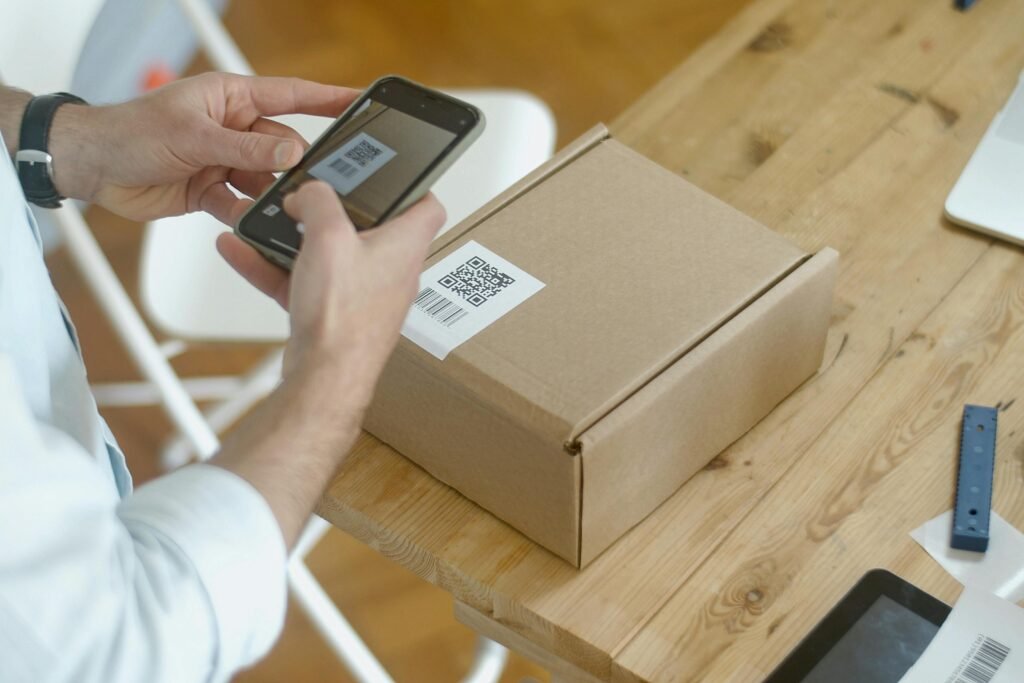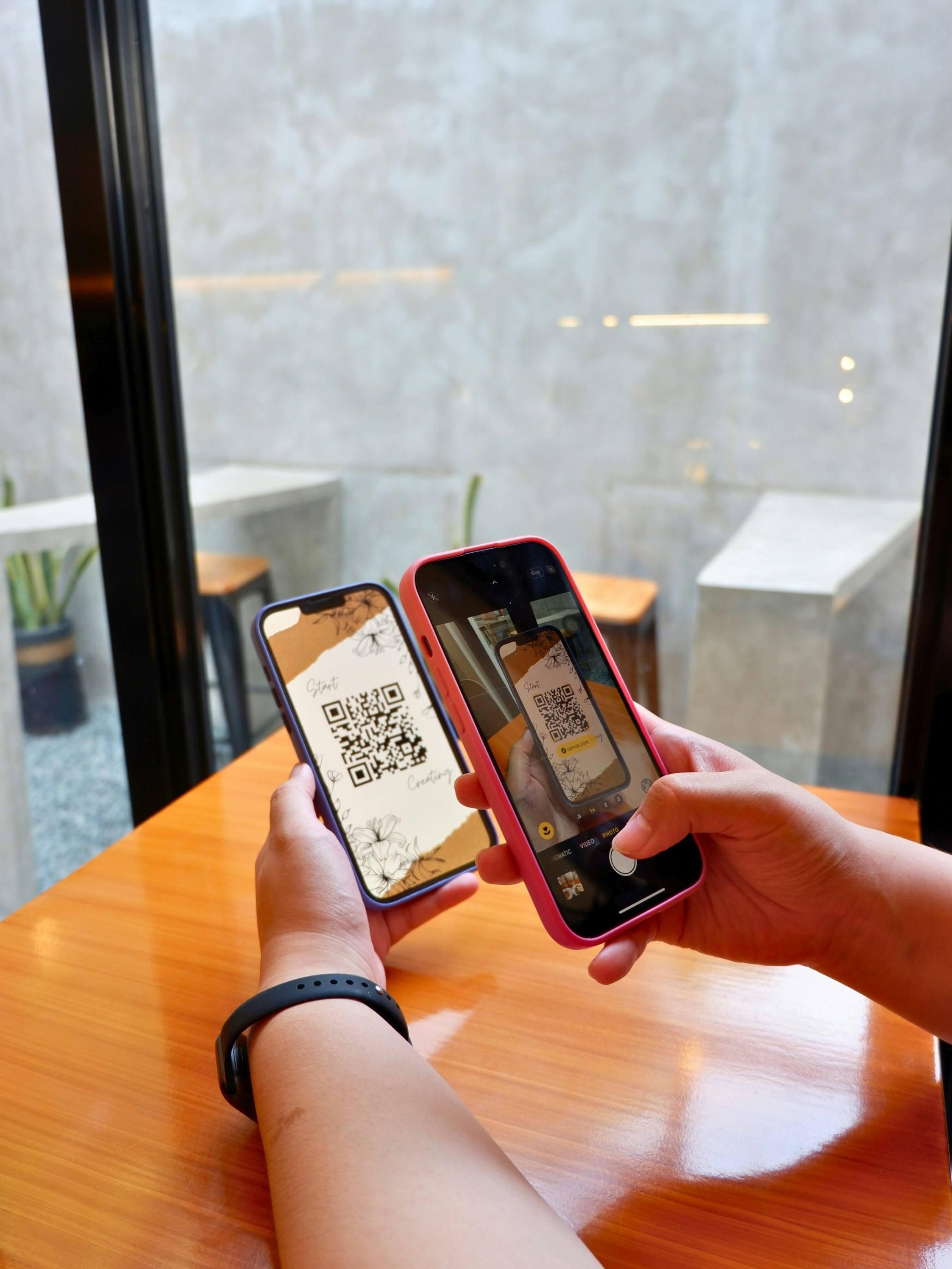Introduction to Barcode Scanners
Barcode scanners are essential devices that facilitate the reading and interpretation of barcodes, which areoptical representations of data, typically consisting of parallel lines and numbers. These scanners convert the stored information in a barcode into a readable format, allowing businesses to effectively manage inventory, streamline checkouts, and enhance various operational processes. The use and implementation of barcode scanners span across multiple industries, including retail, healthcare, and logistics, playing a crucial role in modern commerce.
The primary functionality of a barcode scanner involves capturing the visual data encoded in a barcode and translating it into text or numbers, which can then be processed by a computer or a point-of-sale (POS) system. Most barcode scanners operate using light, usually through a laser or LED, to scan the barcode. Upon detecting the barcode, the scanner sends the decoded data to a computer, enabling quick access to product information, pricing, and stock levels. In doing so, barcode scanners significantly reduce human error and enhance overall efficiency.
The technology behind barcode scanning has evolved over the years. Initially, scanners were limited in their capabilities, using simple linear barcode systems. However, advancements in technology have led to the development of sophisticated 2D barcode systems, such as QR codes, which can store much more information and can be scanned by smartphones. Furthermore, the integration of wireless and mobile scanner technology has granted businesses the flexibility to scan items remotely, improving speed and accessibility. As organizations continue to seek innovative ways to enhance their operational efficiency, understanding the varying types of barcode scanners and their applications becomes increasingly important.
Types of Barcode Scanners
Barcode scanners are essential tools used for reading barcodes, which are widely employed in various industries to enhance efficiency and accuracy in data capture. There are several types of barcode scanners available on the market, each designed to meet specific needs and use cases.
Handheld scanners are among the most commonly used types. These portable devices allow users to scan barcodes from various angles and distances, making them ideal for retail environments, warehouses, and inventory management. Handheld scanners can be equipped with either laser or imager technology, providing flexibility depending on the scanning requirements.
Fixed mount scanners, on the other hand, are designed for stationary applications. These devices are typically installed in strategic locations, such as conveyor belts or kiosks, where they continuously scan products as they pass through. This type of scanner is particularly efficient in high-volume settings, such as manufacturing lines or grocery stores, ensuring speedy data capture without manual intervention.
Another category is the pen-type scanner, which is a more compact and affordable solution. These scanners require the user to manually swipe the scanning tip over the barcode. While they tend to be less popular in large-scale operations, pen-type scanners are useful for light-duty scanning tasks, especially when space is limited or portability is necessary.
Laser scanners utilize laser beams to read barcodes, which can be ideal for scanning at longer distances. They are known for their accuracy and speed, making them a preferred choice in environments where quick transactions are essential, such as checkout counters.
Charge-Coupled Device (CCD) scanners employ an array of light sensors to capture barcode data, providing excellent performance in both bright and low-light conditions. Lastly, imager scanners use a camera-based technology to capture images of the barcode, allowing for the reading of both 1D and 2D barcodes. This versatility makes them suitable for a wide range of applications, including mobile point-of-sale systems and QR code scanning.
Handheld Barcode Scanners
Handheld barcode scanners are versatile devices designed for ease of use across various industries. Their portability allows users to easily scan items in different settings, including retail stores, warehouses, and field services. Unlike fixed scanners, handheld barcode scanners can be manipulated by users to target specific products, making them ideal for environments with a high volume of items needing identification.
These devices come in several models, each tailored to suit specific operational needs. Some handheld scanners are equipped with laser technology, which excels in reading 1D barcodes, such as those found on bulk merchandise. On the other hand, CCD scanners and imager scanners offer enhanced capabilities for reading both 1D and 2D barcodes. Each type of scanner is constructed with unique features that enhance functionality including a variety of connectivity options such as USB, Bluetooth, and Wi-Fi. This flexibility allows businesses to integrate the scanners into their existing systems easily.
When selecting a handheld barcode scanner, certain factors should be considered. Battery life is a critical element, particularly in environments where devices are frequently used throughout the day; longer-lasting batteries minimize downtime. Additionally, ergonomics plays a significant role in user comfort, especially during extended periods of usage. Lightweight designs and comfortable grips are essential for ensuring that employees can operate these devices efficiently without unnecessary strain.
In their various applications, handheld barcode scanners significantly improve operational efficiency. In retail, they streamline the checkout process, allowing cashiers to scan items quickly. In warehouses, they facilitate inventory management by making it simple to track stock levels. Meanwhile, in field services, they enhance data collection processes, making it possible for field technicians to handle tasks more effectively. Overall, the integration of handheld barcode scanners into daily operations contributes to increased productivity and accuracy.
Fixed Mount Barcode Scanners
Fixed mount barcode scanners are specialized devices designed for permanent installation in specific locations, providing a stable and efficient scanning solution in various environments, notably in assembly lines and point-of-sale (POS) systems. These scanners are affixed to a mount or a fixture, allowing them to capture barcode data without the need for manual handling. This fixed positioning significantly minimizes human error and enhances the efficiency of operations, streamlining processes in distribution centers, manufacturing facilities, and retail environments.
One of the primary advantages of fixed mount barcode scanners is their ability to perform high-speed scanning. Because they remain stationary, these devices can rapidly capture data from passing products or transactions, substantially increasing throughput in busy settings. In assembly line operations, for instance, products can pass directly under the scanner, allowing for quick verification of items and ensuring that the production workflow remains uninterrupted. Additionally, these scanners often incorporate advanced imaging technology, enabling them to read various barcode formats, including 1D and 2D barcodes, with precision.
Fixed mount scanners also excel in environments where integration with existing systems is crucial. Many models are equipped with versatile connectivity options, such as USB, serial, or Ethernet, enabling seamless integration with warehouse management systems, inventory tracking applications, or POS terminals. This compatibility allows organizations to enhance their operational efficiency by automating data capture and reducing manual data entry efforts. Furthermore, their robustness and durability make them suitable for challenging environments, such as warehouses or manufacturing floors, where reliability and resilience are essential.
In summary, fixed mount barcode scanners provide an effective solution for automated data capture in various industries, promoting operational efficiency and accuracy while seamlessly integrating with many existing systems.
Pen-Type Barcode Scanners
Pen-type barcode scanners represent a fundamental approach to barcode reading, distinguished by their simplicity and manual operation. Users of these devices must physically swipe the scanning pen across the barcode to capture the data encoded within it. This style of scanning, while requiring a bit more effort and precision from the user, allows for a deep level of engagement with the product being scanned. One of the most appealing aspects of pen-type barcode scanners is their cost-effectiveness; they are often considerably less expensive than many of their automated counterparts, making them an attractive option for small businesses or for specific niche applications.
Despite their affordability, pen-type scanners have limitations that may affect their usability in certain environments. For example, they typically require a steady hand and a clear view of the barcode, which can lead to scanning errors if not executed correctly. Additionally, the manual operation means that they are not suited for high-volume environments where speed and efficiency are essential. These scanners are generally slower than laser or imager-based scanners, making them less ideal for busy retail or warehouse settings.
Laser Barcode Scanners
Laser barcode scanners represent a widely utilized technology in the realm of automatic data capture. These devices employ laser light to scan and read barcodes by capturing the reflected light from the barcode pattern. The fundamental principle behind laser barcode scanners is quite straightforward; they emit a laser beam that oscillates back and forth across the barcode. When the beam strikes a reflective surface, it returns to the scanner, allowing the device to decode the information contained within the barcode.
The advantages of laser technology are numerous, with speed and accuracy being the most notable. Laser barcode scanners are designed to capture data at an exceptional rate, ensuring efficient processing during transactions, inventory management, and various other applications. Their accuracy in reading barcodes also reduces the risk of errors, which is crucial in environments that require precision, such as retail and logistics.
In addition to speed and accuracy, laser barcode scanners have the capability to read barcodes from a greater distance compared to other types of scanners, such as CCD scanners. This feature is particularly beneficial in warehouses or retail environments where items may be spaced apart or stacked. Furthermore, laser scanners are adept at reading various types of barcodes, including both 1D and some 2D codes, making them versatile tools across multiple industries.
Industries such as healthcare, retail, manufacturing, and logistics greatly benefit from the implementation of laser barcode scanners. In healthcare settings, for instance, these scanners facilitate the tracking of medication and patients, ensuring compliance and safety. Retailers utilize them for quick checkouts and inventory control, while manufacturers rely on their precision for assembly line processes. Overall, laser barcode scanners are invaluable devices that enhance operational efficiency and accuracy in countless applications.
CCD Barcode Scanners
Charge-Coupled Device (CCD) barcode scanners are a popular choice in various industries due to their efficiency and versatility. Utilizing an array of tiny lights and sensors, CCD scanners capture images of barcodes by illuminating them and reading the reflected light. This uniquely allows for the scanning of barcodes without requiring a direct line of sight, which can be particularly beneficial in environments where swift scanning is essential. The design of CCD technology makes it well-suited for reading 1D barcodes, as well as some 2D codes under optimal conditions, enhancing its usability across different applications.
One of the significant advantages of CCD barcode scanners is their ability to scan barcodes from a distance of several inches, providing flexibility in various working environments. Unlike laser scanners that rely on a focused beam and require precise alignment, CCD scanners can read codes on products that may not be perfectly positioned. This feature significantly reduces the time spent on scanning operations and increases overall productivity.
Moreover, when comparing CCD scanners with laser and imaging scanners, it becomes evident that CCD scanners perform particularly well in environments where ambient light can affect laser beam accuracy. While laser scanners can struggle with reflective or glossy surfaces due to their reliance on direct laser beams, CCD scanners thrive, as they are less sensitive to such factors. In addition, CCD scanners are generally more durable and less prone to damage, making them an appealing choice for rugged applications.
In summary, CCD barcode scanners represent a reliable technology suitable for diverse barcode scanning needs. Their efficient reading capabilities, coupled with the advantage of not needing a direct line of sight, make them an invaluable asset in retail, inventory management, and other sectors requiring robust scanning solutions.
Imager Barcode Scanners
Imager barcode scanners represent a significant advancement in the field of barcode reading technology. Unlike traditional laser scanners that rely on a laser beam to read one-dimensional barcodes, imager barcode scanners utilize a camera to capture images of barcodes. This capability enables them to decode a wide array of barcode formats, including both one-dimensional (1D) and two-dimensional (2D) barcodes, such as QR codes and PDF417 codes. Their versatility in handling multiple formats makes imager barcode scanners a preferred choice in various industries.
The operational mechanism of imager barcode scanners involves capturing a digital image of the barcode, which is then processed through sophisticated decoding software. This advanced feature allows them to read damaged or poorly printed barcodes that may present challenges for other types of scanners. Additionally, imager barcode scanners are known for their ability to work at varying distances, providing the flexibility to scan barcodes from both close-up and far away.
As mobile technology continues to evolve, imager barcode scanners are becoming increasingly integrated into mobile applications. Many smartphones and tablets are now equipped with built-in cameras capable of capturing and decoding barcodes, making it accessible for businesses to implement barcode scanning without relying on dedicated hardware. This trend is particularly advantageous for retail environments, inventory management systems, and logistics operations, where quick and efficient scanning can enhance productivity and reduce errors.
Looking towards the future, the demand for imager barcode scanners is expected to grow as more industries recognize their multiple advantages. Innovations in imaging technology, such as higher resolution cameras and advanced algorithms, are likely to increase the efficiency and accuracy of these devices. As they become more prevalent in everyday applications, imager barcode scanners will undoubtedly play a key role in the continued evolution of automated data capture.
Choosing the Right Barcode Scanner
Selecting the appropriate barcode scanner is a critical decision that can significantly influence operational efficiency in various business settings. Factors such as the type of barcode to be scanned, the specific environment in which it will be used, budget constraints, and unique business requirements must be carefully considered. Understanding these considerations ensures that the chosen device meets not only current needs but also accommodates future growth.
When evaluating the type of barcode to be scanned, it’s important to note the different formats available, such as 1D and 2D barcodes. 1D scanners are generally effective for traditional barcodes, while 2D scanners can decode more complex barcodes, such as QR codes. Evaluating your inventory and the types of barcodes used within your operations will help to inform this choice. Environments play a vital role as well; for instance, if you are operating in a warehouse or a retail situation where speed is essential, a handheld scanner with a reliable read range will be more beneficial.
Additionally, the budget is another core consideration. Barcode scanners range widely in price depending on their technology, features, and durability. Investing in a device with advanced features may provide long-term savings by improving accuracy and reducing labor costs. It’s wise to weigh the benefits against potential return on investment (ROI).
Finally, as we look toward the future of barcode technology, developments such as integration with mobile devices and cloud-based solutions are becoming increasingly significant. The ability to adapt to newer technologies ensures that a business remains competitive. In summary, when selecting a barcode scanner, careful consideration of scanning needs, environmental conditions, budget, and future technological trends will lead to an informed decision that supports business growth.
© barcodly.com- All rights reserved





